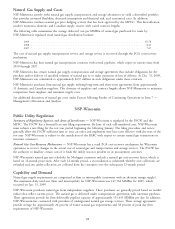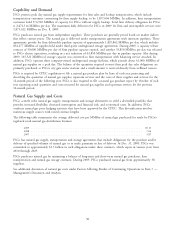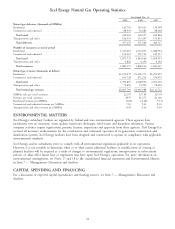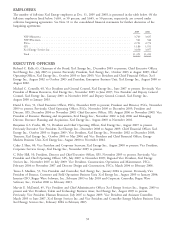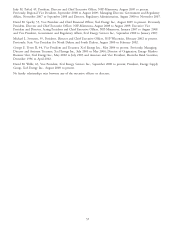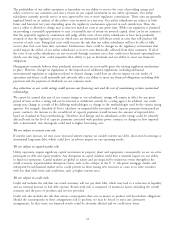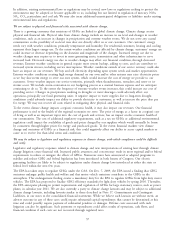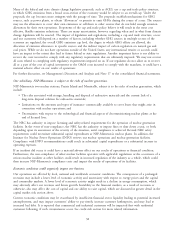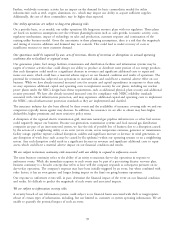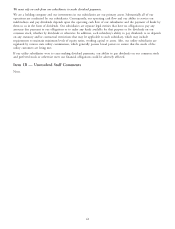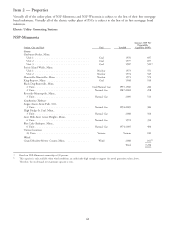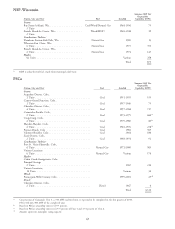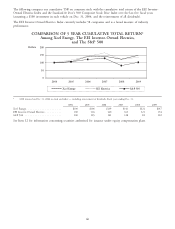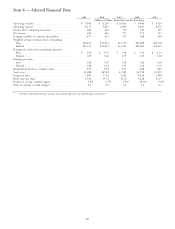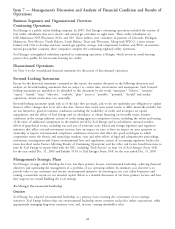Xcel Energy 2009 Annual Report Download - page 48
Download and view the complete annual report
Please find page 48 of the 2009 Xcel Energy annual report below. You can navigate through the pages in the report by either clicking on the pages listed below, or by using the keyword search tool below to find specific information within the annual report.Many of the federal and state climate change legislative proposals, such as ACES, use a cap and trade policy structure,
in which GHG emissions from a broad cross-section of the economy would be subject to an overall cap. Under the
proposals, the cap becomes more stringent with the passage of time. The proposals establish mechanisms for GHG
sources, such as power plants, to obtain ‘‘allowances’’ or permits to emit GHGs during the course of a year. The sources
may use the allowances to cover their own emissions or sell them to other sources that do not hold enough emission
allowances for their own operations. Proponents of the cap and trade policy believe it will result in the most cost
effective, flexible emission reductions. There are many uncertainties, however, regarding when and in what form climate
change legislation will be enacted. The impact of legislation and regulations, including a cap and trade structure, on us
and our customers will depend on a number of factors, including whether GHG sources in multiple sectors of the
economy are regulated, the overall GHG emissions cap level, the degree to which GHG offsets are allowed, the
allocation of emission allowances to specific sources and the indirect impact of carbon regulation on natural gas and
coal prices. While we do not have operations outside of the United States, any international treaties or accords could
have an impact to the extent they lead to future federal or state regulations. Another important factor is our ability to
recover the costs incurred to comply with any regulatory requirements that are ultimately imposed. We may not recover
all costs related to complying with regulatory requirements imposed on us. If our regulators do not allow us to recover
all or a part of the cost of capital investment or the O&M costs incurred to comply with the mandates, it could have a
material adverse effect on our results of operations.
For further discussion, see Management’s Discussion and Analysis and Note 17 to the consolidated financial statements.
Our subsidiary, NSP-Minnesota, is subject to the risks of nuclear generation.
NSP-Minnesota’s two nuclear stations, Prairie Island and Monticello, subject it to the risks of nuclear generation, which
include:
• The risks associated with storage, handling and disposal of radioactive materials and the current lack of a
long-term disposal solution for radioactive materials;
• Limitations on the amounts and types of insurance commercially available to cover losses that might arise in
connection with nuclear operations; and
• Uncertainties with respect to the technological and financial aspects of decommissioning nuclear plants at the
end of licensed lives.
The NRC has authority to impose licensing and safety-related requirements for the operation of nuclear generation
facilities. In the event of non-compliance, the NRC has the authority to impose fines or shut down a unit, or both,
depending upon its assessment of the severity of the situation, until compliance is achieved. Revised NRC safety
requirements could necessitate substantial capital expenditures at NSP-Minnesota’s nuclear plants. In addition, the
Institute for Nuclear Power Operations (INPO) reviews our nuclear operations and nuclear generation facilities.
Compliance with INPO recommendations could result in substantial capital expenditures or a substantial increase in
operating expenses.
If an incident did occur, it could have a material adverse effect on our results of operations or financial condition.
Furthermore, the non-compliance of other nuclear facilities operators with applicable regulations or the occurrence of a
serious nuclear incident at other facilities could result in increased regulation of the industry as a whole, which could
then increase NSP-Minnesota’s compliance costs and impact the results of operations of its facilities.
Economic conditions could negatively impact our business.
Our operations are affected by local, national and worldwide economic conditions. The consequences of a prolonged
recession may include a lower level of economic activity and uncertainty with respect to energy prices and the capital
and commodity markets. A lower level of economic activity might result in a decline in energy consumption, which
may adversely affect our revenues and future growth. Instability in the financial markets, as a result of recession or
otherwise, also may affect the cost of capital and our ability to raise capital, which are discussed in greater detail in the
capital market risk section above.
Current economic conditions may be exacerbated by insufficient financial sector liquidity leading to potential increased
unemployment, and may impact customers’ ability to pay timely, increase customer bankruptcies, and may lead to
increased bad debt. It is expected that commercial and industrial customers will be impacted first with residential
customers following, if such circumstances occur. See credit risk section for more related information.
38


